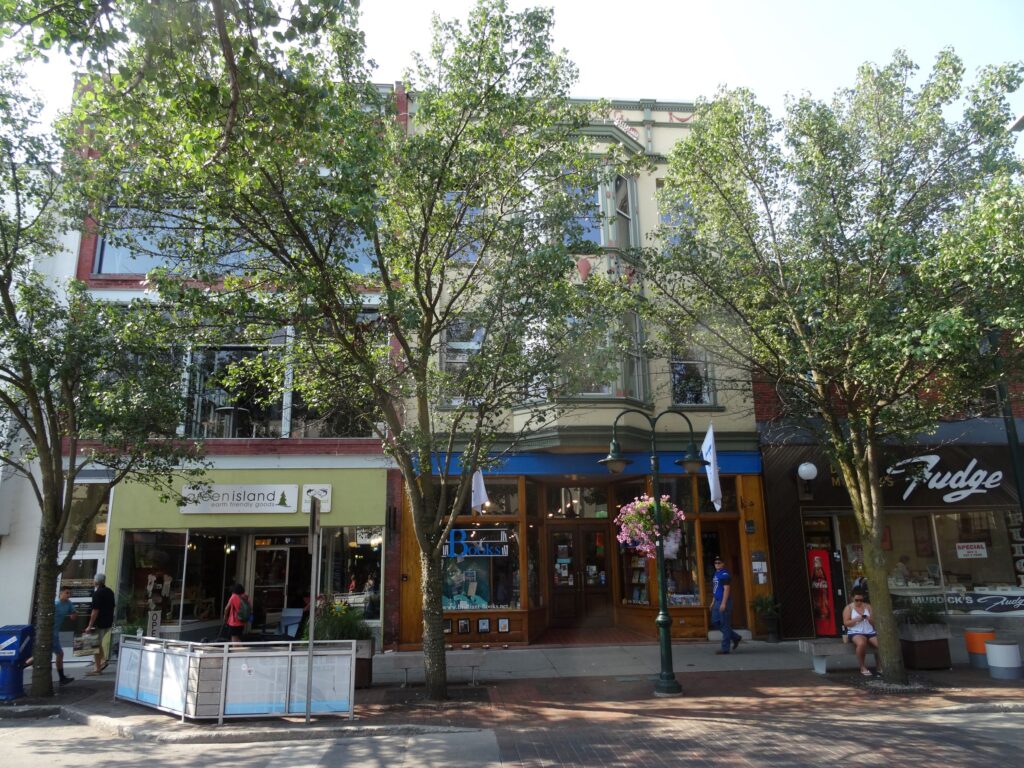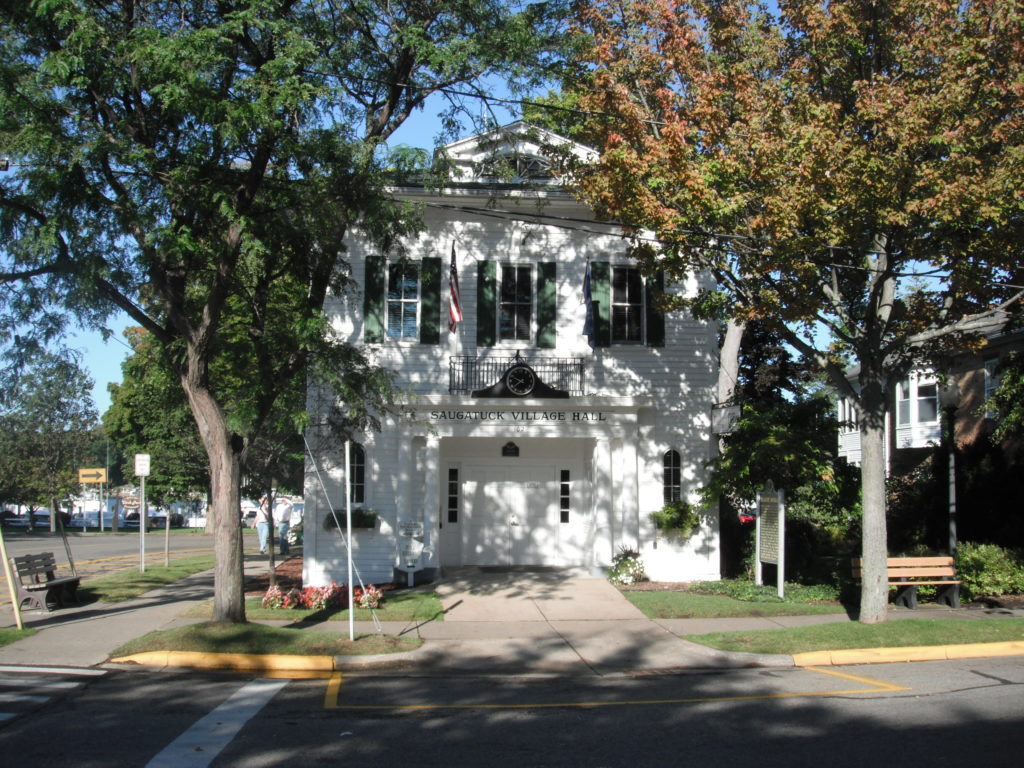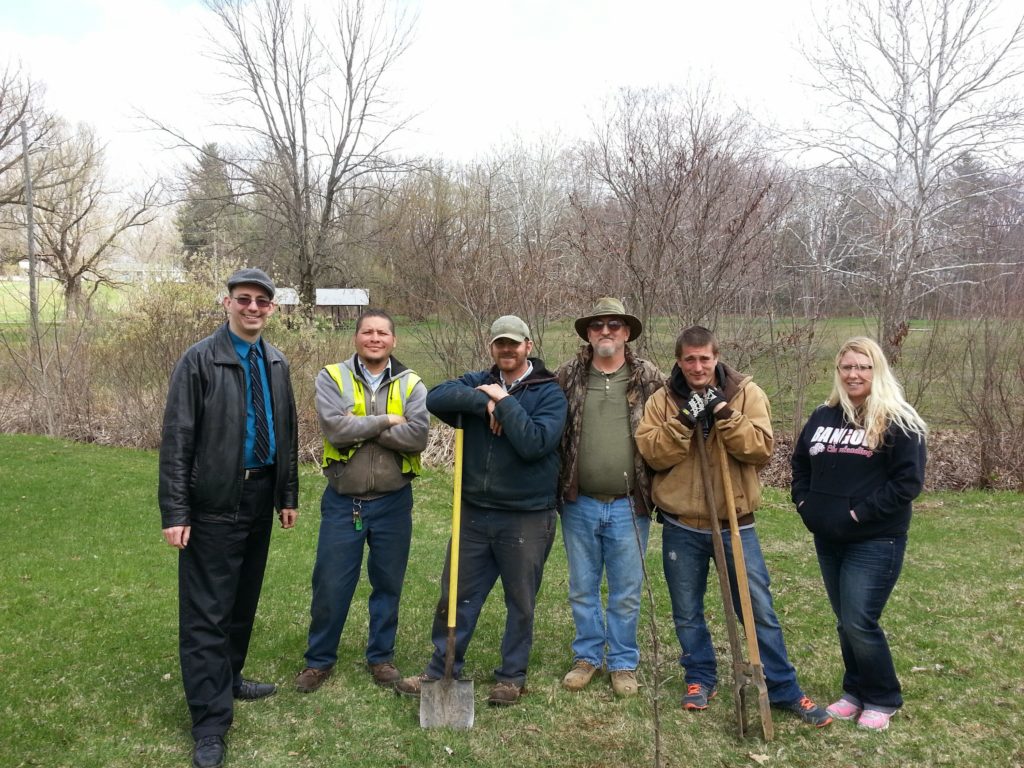An Ode to Street Trees – City Beautiful YouTube Channel
-
-
- Physical Design & Walkability
- Green Initiatives
- Cultural Economic Development
- Entrepreneurship
-
-
-
- Providing all people with access to nature
- Healthy and affordable food
- Upgrading all existing buildings
- Clean water and clean air
-

Top Benefits of Street Trees:
(From reliance-foundry.com’s “11 Benefits of Street Trees in Urban Spaces”.)
-
-
- Air
- Trees sequester carbon by taking carbon from carbon dioxide and…
- Trees generate oxygen
- Trees filter pollutants by capturing and settling particulates
- Trees return moisture to the air through transpiration, making the air less dry
- Water
- Trees return moisture to the air through transpiration, part of the water cycle
- Tree surface area slows rain to assist groundwater replenishment
- Trees slow rain to decrease run-off and flooding
- Tree roots help build the water holding capacity of soil
- Soil
- Tree roots foster better soil health
- Trees prevent soil erosion (true, grass can do this too, but grass doesn’t prevent soil compaction)
- Trees prevent soil compaction
- Safety
- Trees serve as a barrier between vehicles and pedestrians
- Trees serve as traffic calming by making drivers reduce speed
- Trees calm drivers
- Trees encourage pedestrians – increasing neighborhood watching
- Health
- Trees encourage healthy lifestyles by creating walk appeal
- Trees lower rates of psychological distress
- Trees can provide food (fruit and nuts)
- Trees clean air, making breathing easier (but too much pollen can be a problem)
- Economic
- Increasing pedestrians and bicyclists increases local shopping
- Increasing walking and bicycling saves on transportation costs
- Tourists can be drawn to spring blossoms, fall color, tree/tree product festivals, etc.
- Trees moderate temperature, saving on heating and cooling costs
- Temperature Moderation (energy savings & environmental quality)
- Trees moderate coldness by serving as wind barriers
- Tree shade comforts pedestrians
- Tree shade reduces heat from the urban heat island effect
- Trees return moisture to the air through transpiration, causing a cooling effect
- Trees can moderate temperatures between 9–27°F for “physiologically equivalent temperature,” or how cool we feel
- Community Identity – Placemaking
- Trees support community/social engagement by making it easier and more relaxing to be outside
- Beauty – spring blossoms, green canopy, fall color
- Property Values
- Trees increase property values
- Homes with trees sell for 5–10% more
- Depending on placement, trees can help provide privacy to residents
- Trees are the most cost effective public investment
- Air
-

Street Tree Selecting and Locating:
(From Jeff Speck’s Walkable City Rules and reliance-foundry.com’s “How to select the best trees for sidewalks and tree grates”.)
-
-
- Whenever possible tree species should be selected for their capacity to grow large and hefty.
- In tight circumstances, taller and narrower, but still substantial, tree species should be selected.
- Smaller flowering trees can be used to create a special experience on a unique street, but should remain an exception to the rule.
- The mature size, texture, and color of the tree should reflect the street design goals.
- The mature canopy should not interfere with street lighting, signage, or building fronts.
- Maximum tree species height should be selected so the crown of the tree at maturity does not adversely affect overhead utility lines.
- Trees should be spaced so the root systems do not adversely affect underground utilities, sidewalks, or streets (including curbs).
- Trees should be native or orchard, and in special situations, ornamental.
-
Street Tree Selection – Natural Conditions:
-
-
- Hardiness zone
- Soil moisture
- Soil pH
- Sun/shade
- Road salt tolerance
- Insect/disease factors
- Flower pollen
- Fruit messiness
- Root direction
-

Top Shorter Street Trees bearing food (by relative maximum height):
-
-
- Dwarf Pear tree (Pyrus) (10′ height)
- Dwarf Sweet Cherry tree (Prunus avium) (15′ height)
- Pear tree (Pyrus) (20′ height)
- Apple tree (Malus) (20′ height)
- Cherry tree (Prunus) (35′ height)
-
Top Shorter Street Trees not bearing food (by relative maximum height):
-
-
- Sweet Crabapple tree (Malus coronaria) (20′ height)
- Dogwood (Cornus) (20′ in sun; 40′ in shade)
- Serviceberry (Amelanchier) (25′ height)
- American Hornbeam (Carpinus caroliniana) (30′ height)
- Eastern Redbud (Cercis canadensis) (30′ height)
-
Top Taller Street Trees bearing food (by relative maximum height):
-
-
- Hickory (Carya) (60′ height)
- Red Maple (Acer rubrum) (60′ height)
- Sugar Maple (Acer saccharum) (75′ height)
- Walnut (Juglans) (120′ height)
-
Top Taller Street Trees not bearing food (by relative maximum height):
-
-
- Thornless Honeylocust (Gleditsia triacanthos inermis) (60′ height)
- Northern Catalpa (Catalpa speciosa) (60′ height)
- Northern Red Oak (Quercus rubra) (75′ height)
- White Oak (Quercus alba) (80′ height)
- American Linden/Basswood (Tilia americana) (80′ height)
- Bur Oak (Quercus macrocarpa) (80′ height)
- Princeton American Elm (Ulmus americana ‘Princeton’ ) (80′ height) (Dutch elm disease resistant cultivar)
- American Sycamore (Platanus occidentalis) (100′ height)
-
Note: The State of Indiana recommends against municipalities planting any more Silver Maples due to it already being the predominate species planted across the state for many years and wishing to diversify tree options to protect against the possibility of catastrophic loss due to some future pest/disease problem.
